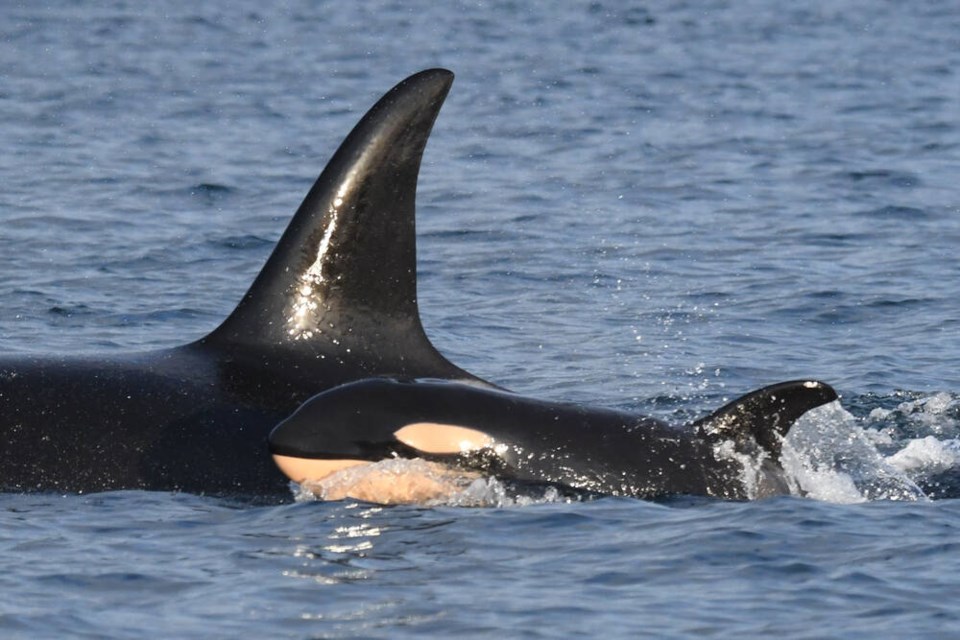A new baby has arrived in J Pod, a hopeful sign for the critically endangered population of southern resident killer whales.
The calf was spotted near Kelp Reef off San Juan Island on Tuesday. It is believed to be the second calf for J37, and the first born to J Pod since September 2020.
Dave Ellifrit of the Center for Whale Research in Washington state confirmed the new addition to J Pod.
The calf was next to its mother, with family members J47 and J40 nearby. Field staff with the research centre last saw J37 on Feb. 11 and she did not have a calf at that time.
“We estimate this baby was born within the past few days, given its lumpy physical nature,” the centre said in statement released Wednesday.
The newborn has been designated J59, but the sex is not yet known.
“Its size and shape are typical of a calf in good physical condition,” researchers said.
J37, also known as Hy’Shqa, is 21 years old. The name means “blessing” or “thank you” and was bestowed during a traditional potlatch ceremony by the Samish Nation in October 2001.
Hy’Shqa is part of the J14 matriline and has two siblings, J40 (female, born 2004) and J45 (male, born 2009). She was a young mother, only 11 years old, when she gave birth to her first calf in 2012:, J49 (male).
The last J Pod calf was born in September 2020, when J41 gave birth to J58, a female.
As of Dec. 31, the fragile southern residents killer whale population — comprising J, K and L Pods — stood at only 73 animals. L Pod has 33 members and K Pod 16.
J Pod, consisting of 25 orcas, is the most likely to appear year-round in the waters of the San Juan Islands and Southern Gulf Islands, lower Puget Sound and the Strait of Georgia.
The pod used to frequent the inland waters of the Salish Sea from late spring through early fall, but, in recent years, visits have become shorter, likely caused by the shortages of chinook salmon, their main food source.



